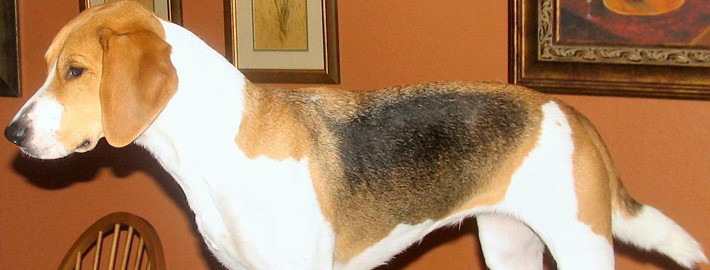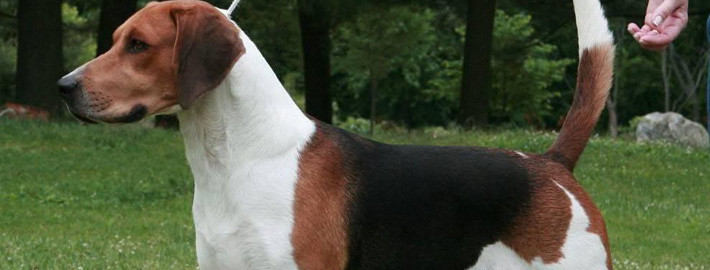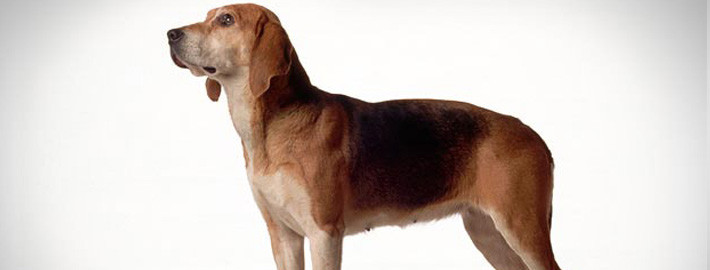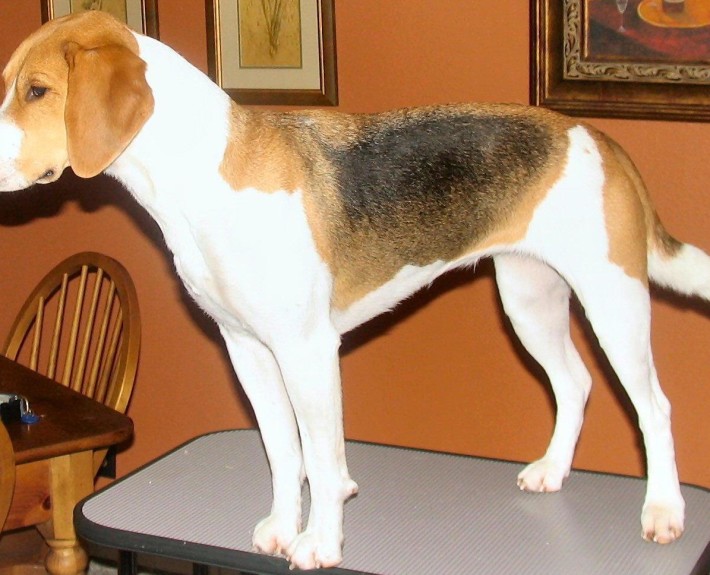What makes the Harrier Unique?
Although they are popular as a hunting dog in Ireland and in the United Kingdom, Harriers have achieved far less recognition in other parts of the world. This is a shame because these lop eared dogs makes wonderful pets for active families that are prepared to give their pets the attention that they need in order to thrive.
Page Contents
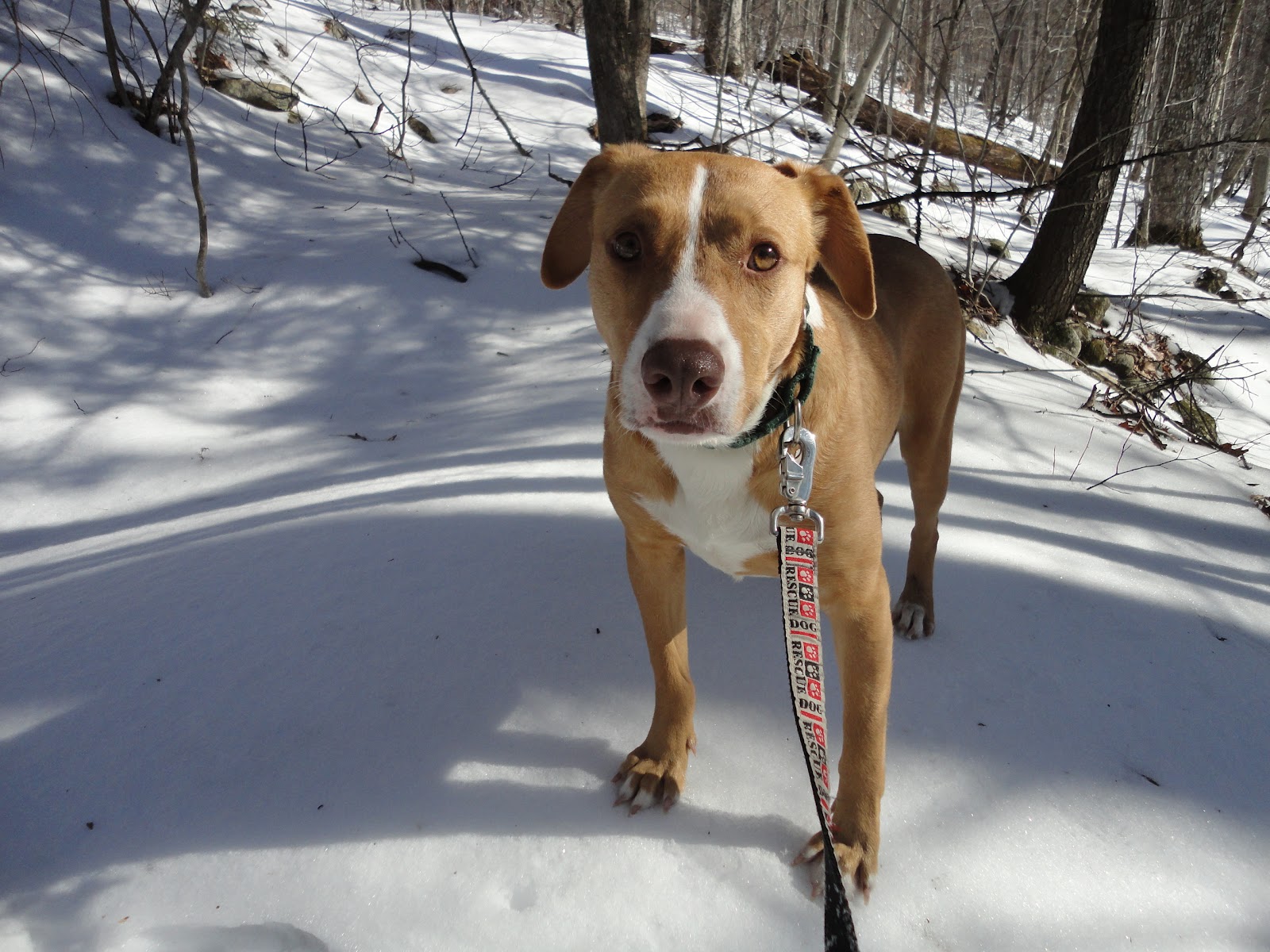
Is the Harrier Right For You?
Although their true love is pursuing interesting smells, this friendly, family-oriented breed wants nothing more than to spend as much time as possible with the people in their lives. The obvious downside to this otherwise admirable trait is that Harriers do not react well to being left to their own devices and they can become quite destructive if they get lonely or bored. It goes without saying that members of this playful, outgoing breed get along well with kids but these dogs can still be too boisterous in their play to make acceptable companions for very young children.
In 5 Words
- Tolerant
- Friendly
- Outgoing
- Sweet-Tempered
- Cheerful
Characteristics
Learn About the Harrier
Description
General Description
Although Harriers look a lot like English Foxhounds or Beagles, they are nonetheless an entirely different breed. These dogs are indefatigable in the pursuit of their prey no matter how rough the terrain might be and their bodies reflect this fact. Their compact size enables these dogs to easily flush out game that might be hiding in thickly wooded spaces. Even so, Harriers were originally bred for stamina rather than speed. These dogs have a large bone structure, muscular bodies, and a level back. Members of this breed are also somewhat longer than they are tall.Harriers additionally possess black noses, wide chests, lengthy limbs, and cat like feet. Their medium-sized brown or hazel eyes should have an alert expression in them when they are actively engaged. Their ears are rounded at the ends and these appendages hang close to their heads. Long, high-set tails are yet another breed feature.
Size
Members of this breed stand between 18 and 24 inches (45 and 56 centimeters) tall on average. It is likewise typical for Harriers to weigh about 40 to 65 pounds (18 to 29.5 kilograms).
Coat
These dogs have a short, coarse coat that is softer on the ears than it is on the rest of their bodies. Harriers also have extra fur on the underside of their tails. The American Kennel Club lists red and white or black, tan, and white colorations as being standard for members of this breed.
Short History of the Harrier
Despite the many conflicting theories about the breed’s origin, it is very likely that these dogs were originally downsized from the English Foxhounds. It is also possible that Bloodhound, Fox Terrier, Talbot Hound, Greyhound, and Basset Hound ancestry can be found in the Harrier bloodlines. Members of this breed were created in England during the Middle Ages for the purpose of hunt rabbits or hares. They additionally proved themselves to be quite adroit at catching foxes. These dogs were imported to the States as early as the Colonial period but they remained far more common their native country. By 1885, the Harrier breed was nonetheless recognized by the American Kennel Club as part of their hound group. As is the case with some breeds, these dogs have since diverged along show and working lines.
Temperament
Although their true love is pursuing interesting smells, this friendly, family-oriented breed wants nothing more than to spend as much time as possible with the people in their lives. The obvious downside to this otherwise admirable trait is that Harriers do not react well to being left to their own devices and they can become quite destructive if they get lonely or bored. It goes without saying that members of this playful, outgoing breed get along well with kids but these dogs can still be too boisterous in their play to make acceptable companions for very young children. As Harriers were bred to work in packs, they also get along well with other dogs and do well in households where they aren’t the only canine. These dogs still tend to be wary around strangers. Prospective owners should likewise note that members of this breed are very vocal dogs and they may not be a good choice for living situations where the noise they make could become problematic.
Caring for Your Harrier
General Health
Harriers are a typically healthy breed of dog and most live more than 12 years. However, ailments such as epilepsy, hip dysplasia, and perianal fistula have been known to occur from time to time. Members of this breed should have regular hip and eye exams so that owners can quickly identify and treat any ailments that might arise.
Care
Daily
Harriers need about an hour of exercise on a daily basis. Lengthy walks or jogs are recommended for members of this breed. These dogs may also enjoy hiking, accompanying bicyclists, and swimming. Country dwelling Harriers will likewise benefit from being able to run about and play in open areas where there is no traffic present.
Weekly
It is important for owners to clean their dog’s teeth a several times a week using a canine toothbrush and a vet-approved toothpaste to help the pet in question maintain good oral health.
Monthly
Parasite prevention medications are highly recommended for all dog breeds. Most products should be administered once a month in order to obtain good results.
Grooming & Bathing
Harriers have modest grooming requirements. They should be brushed a few times per week with either a rubber brush or a hound mitt to keep households from becoming inundated with fur. These dogs will only need to be bathed when they become dirty, smelly, or both. However, any pets that go swimming should be rinsed off with fresh water afterwards to keep any problems from arising. Owners will also want to keep their Harrier’s ears clean and the dog’s toenails trimmed so that the animal in question remains in good health.
Exercise & Training
As is the case with most working breeds, Harriers benefit greatly from having a job to perform. While some individuals can be stubborn, members of this intelligent breed are usually easy to train and they learn quickly when they are given treats as an incentive to master new tricks. These dogs nonetheless have a tendency to follow any interesting aroma that they encounter no matter what they are commanded to do. Therefore, members of this breed should be kept on their leashes or in securely fenced areas if they are dwelling in urban or heavily trafficked environments. Even so, prospective owner should be aware that Harriers can be escape artists and these dogs will do all they can to get out of enclosure if they discover something that they feel like chasing. Digging under fences is not unheard of behavior for members of this breed, particularly if they are allowed to become bored.

